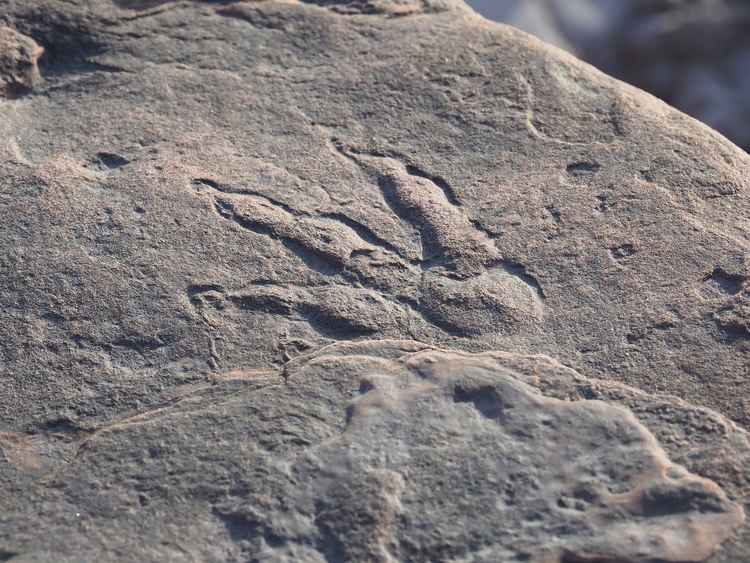BARRY, WALES – A four-year-old girl in Wales discovered a perfectly preserved dinosaur footprint that is believed to be 215-220 million years old.
Dinosaurs emerged on the planet 230 million years ago. Scientists are excited about the discovery as it may tell a lot about the early dinosaurs, shedding light on their evolution when their different groups were still diversifying.
Palaeontologists say it is “the finest impression of a 215-million-year-old dinosaur print found in Britain in a decade.” The little girl, Lily Wilder from the town of Llandough has stunned palaeontologists after finding an “internationally important” dinosaur footprint on a trip to the supermarket.
Lily was walking along the beach with her father Richard when she said, “Daddy look.” Her father thought it was too good to be true as the footprint was so well preserved. At first he thought it must have been made by an artist. Nevertheless, he took a picture and showed it to his wife.
“We weren’t even sure it was real. I was imagining an artist had gone down and scratched it out, but I knew dinosaur footprints had been found along that piece of coast before so I just thought I’d ask some people,” said Lily’s mother, Sally Wilder.
The Bendricks, a stretch of coastline between the areas of Barry and Sully is known to be of paleontological importance as some other footprints had been found there earlier too. However, this discovery is special because earlier discoveries were those of crocodilian type of creatures, but this is clearly that of a bipedal dinosaur.
“I found this fossil identification page on Facebook and I posted it on there and people went a bit crazy. It’s all been so exciting, discovering that it’s actually what they thought it was,” Sally told local media.
The print is just over 10cm long and is likely to have been made by a dinosaur that stood about 75cm tall and 2.5m long. It would have been a slender animal which walked on its two hind feet and actively hunted other small animals and insects. The print was impeccably preserved in fossilised mud. Experts call this type of print a Grallator, although it is impossible to identify the exact type of dinosaur that left it.
The National Museum in Cardiff have removed the footprint and is now being studied by scientists. The museum said special permission had to be sought from Natural Resources Wales (NRW) to legally remove it.
Lily’s interest in dinosaurs has been peeked after finding the footprint and her family are helping her make the most of it. “Recently we bought her some dinosaur toys so she’s been playing obsessively with dinosaurs all week,” said mum Sally.
“What’s amazing is, if her name goes down as the finder in the museum, it could be her grandchildren going to visit that in the museum one day, and for years and years and generations to come, which is quite amazing,” Sally said.
“Its spectacular preservation may help scientists establish more about the actual structure of their feet as the preservation is clear enough to show individual pads and even claw impressions,” National Museum Wales said in a statement.
A spokesman from the National Museum in Cardiff said similar footprints in the USA are known to have been made by the dinosaur Coelophysis which does not occur in the UK.














